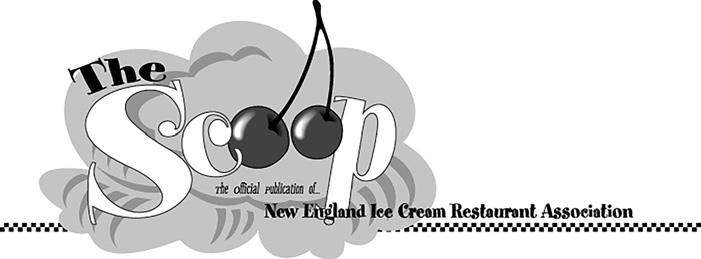
7 minute read
Cash Flow Strategies and Profits
by Mark E. Battersby
Cash flow is the life blood of every business. In fact, according to a recent U.S. Bank study, poor cash flow management causes 82% of U.S. business failures. Although seemingly counterintuitive, many experts advise putting cash flow management before profits.
Advertisement
While profits are how an ice cream or frozen dessert business survives, failure to manage the operation’s cash flow can mean running into problems that one profitable accounting period might not be able to offset. Another study, this one by Intuit, revealed that 61% of small businesses around the world struggle with cash flow and 32% are unable to pay vendors, pay back pending loans, pay themselves or their employees, all due to cash flow issues.
Cash Flow Management 101
In essence, cash flow is nothing more than the movement of money in and out of the ice cream business. Cash flows into the business from sales of products or services. Money flows out of the business for supplies, raw materials, overhead and salaries in the normal course of business.
An adequate cash flow means a steady flow of money coming into the business in time to be used to pay those bills. How well the frozen dessert operation’s cash flow is managed will obviously have a significant impact on the bottom-line profits of the business.
More-often-than-not, the operation’s cash inflows will lag behind its cash outflows, often leaving the business short of money. This shortage or cash flow “gap,” represents an excessive outflow of cash that may not be covered by a cash inflow for weeks, months or even years.
Properly managing the ice cream or frozen dessert operation’s cash flow allows that “gap” to be narrowed or closed completely before it reaches the crises stage. This is usually accomplished by examining the different items that affect the operation’s cash flow -– and looking at the various components that directly impact on cash flow. This analysis can provide the answer to a number of important questions such as:
• How much cash does the business have? • How much cash does the business need in order to operate -– and when is it needed?
• Where does the business get its cash and spend it? • How does the operation’s income and expenses affect the amount of cash needed to operate the business?
The “In” of Cash
In a perfect world, there would be a cash inflow, usually from a cash sale, every time there is an outflow of cash. Unfortunately, this occurs very rarely in an imperfect busi
ness world. Thus, the need to manage the cash inflows and outflows of the business.
Obviously, accelerating cash inflows improves overall cash flow. After all, the quicker cash can be collected, the faster the business can spend it. Put another way, accelerating cash flow allows a business to pay its own bills and obligations on time, or even earlier than required. It may also allow the business to take advantage of trade discounts offered by suppliers.
An important key to improving the ice cream or frozen yogurt operation’s cash flow is often as simple as delaying all outflows of cash as long as possible. Naturally, the operation must meet its outflow obligations on time, but delaying cash outflows makes it possible to maximize the benefits of each dollar in the operation’s own cash flow.
Outflow
Outflows are the movement of money out of the business, usually as the result of paying expenses. If the busi-
ness involves reselling goods, the largest outflow will most likely be for the purchase of inventory. An ice cream manufacturing business’s biggest outflow most likely involve the purchase of raw materials and other components needed for the manufacturing process. Purchasing fixed assets, paying back loans and paying the operation’s bills are all cash outflows.
An ice cream retailer or other business operator can regain control over their finances by adopting best practices and proper tools. A good first step involves how the operation pays its bills.
Many credit cards have a cash back bonus program. Even if the program offers only 1% cash back, that could equate to a sizeable monthly amount for many ice cream and frozen dessert businesses. Of course, because credit cards tend to have a higher interest rate, they should only be used if the balance can be quickly paid off in full. Where bulk sales are involved, improving the invoicing process is another key step in cash flow management. Any business can adopt incentive strategies to be paid faster. Giving away small extra services, on the other hand, might work. Incentives might include the following:
• Small additional services • Discount for early payments (balance paid before a certain date, or yearly invoice vs. monthly)
• Greater flexibility (for instance: a down payment required to book a delivery date).
Some customers are just late payers and need to be nudged. The way that dunning is handled can, however, greatly affect the collection process. Timing and the quality of message content are the two main factors in the success or failure of these prods.
The manner in which the ice cream business gets paid not only affects its profitability but also its cash flow. Today, paper checks remain as the standard method of payment. However, paper checks are slow, highly susceptible to fraud and bear “hidden costs” such as additional work and back office processing. They are also inadequate for recurring invoicing.
Something as simple as asking customers to switch to debit cards or electronic funds transfer (EFT or ACH), providing incentives, etc., are among the tips that can be offered for faster, more secure, reliable and cheaper payments.
external financing sources: revolving lines of credit, bank loans and trade credit are just a few external financing options available to most ice cream and frozen dessert operations.
Improving Cash Flow
As mentioned, cash flow and profit are not the same. There are many factors that make up cash flow, such as inventory, taxes, expenses, accounts payable and accounts receivable.
The proper management of cash outflows requires tracking and managing the operation’s liabilities. Managing cash outflows also means following one simple, but basic rule: Pay your bills on time -– but never pay bills before they are due.
Having a cash reserve can help any frozen dessert business operator survive the gaps in cash flow. Applying for a line of credit from the bank is one way to build that cash reserve. Once qualified, lenders will grant a predetermined credit limit which can be withdrawn from when needed.
Yet another option might be frugality. Aiming to keep the ice cream business lean, evaluate it. Is the purchase of new equipment really necessary? Will hiring new employees really be cost-effective? Weighing the pros and cons of all business needs and wants enables the business to retain cash flow and avoid unnecessary expenses.
Cash Flow Gaps
Remember, however, the cash flow gap in most businesses represents only an outflow of cash that might not be covered by a cash flow inflow for weeks, months or even years. Any business, large or small, can experience a cash flow gap -– it doesn’t necessarily mean the business is in financial trouble.
In fact, some cash flow gaps are created intentionally. That is, a business owner or manager will sometimes purposefully spend more cash to achieve some other financial results. A business might, for example, purchase extra inventory to meet seasonal needs, to take advantage of a quantity or early-payment discount, or might spend extra cash to expand its business.
Cash flow gaps are often filled by
Cash Flow Loans
Cash flow-based loans rely on the value of the operation’s cash flow. If the operation has a strong cash flow stream, it can be used to get significant loan amounts even if there are few business assets. Although cash flow loans can be expensive, they play a key roll in any expanding business.
An advantage of cash flow loans is the repayment period. These loans are usually designed according to the needs of the borrower with repayment period usually between five and seven years. And, since cash flow loans are different from asset-based loans, rarely does collateral have to be put up.
Flowing Cash Flows
Assessing the amounts, timing and uncertainty of cash flow is the most basic objective of cash flow management. Positive cash flow indicates the liquid assets of the business are increasing, enabling it to settle debts, reinvest in its business, return money to shareholders, pay expenses and provide a buffer against unanticipated financial challenges. The impact of a negative cash flow can be profound with so many operating on margins so thin that frequent lost opportunities will put them on the path to closing their doors.
Every business can improve their cash flow. Of course, in order for this to happen, they need to adopt best practices in the way they invoice, follow up with customers and, monitor outflow. Without the help of a qualified professional, these best cash flow practices may be more difficult to achieve. v
About the Author
Mark E. Battersby currently writes in more than 75 fields, providing topical, valuable and, often interesting, tax and financial information. In addition to syndicating two, topical weekly columns, his monthly columns can currently be found in 14 trade magazines. He has authored four books.



